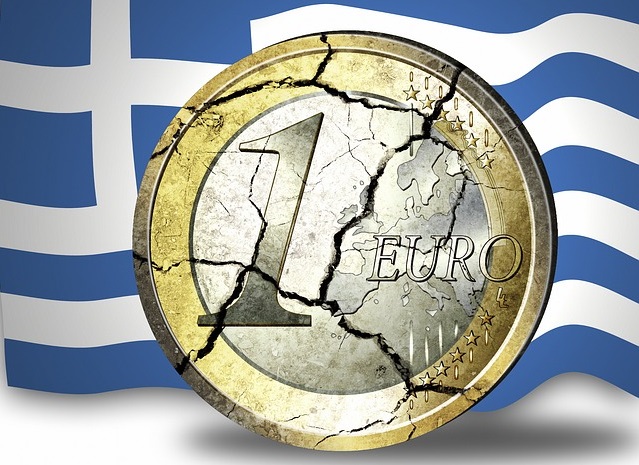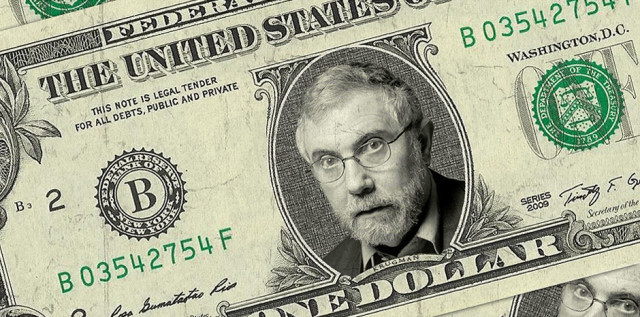The Turnaway Study: A Lesson in Politically Incentivised and Twisted Science

Pro-choice ideology has been allowed to infect research on mental health outcomes for women who have had abortions.
Given decades of legal and quasi-legal abortions in developed countries involving millions of women, there should be many studies with various findings on the impact of what was, until “shout your abortion” politics came along, generally regarded as a complex decision for a woman. And yet the Anglo-American lay reader is likely to find only one.
It’s called the Turnaway Study, conducted at the University of San Francisco California in 2008-2010. Mainstream media outlets have been broadcasting its results for nearly a decade, and research articles generated from the same core sample of women have been published in droves.
The study has been touted by academics, professional organisations, and journalists alike as the abortion study to end all studies, offering definitive answers to hotly debated questions on how abortion benefits contemporary women psychologically, relationally, physically and in terms of life satisfaction — among a host of other quality of life indicators.
Not quite, according to Priscilla Coleman, retired Professor of Human Development and Family Studies at Bowling Green State University in Ohio. Coleman has been studying the psychology of abortion decision-making and mental health outcomes associated with abortion for nearly 30 years. Last month she published “The Turnaway Study: A Case of Self-Correction in Science Upended by Political Motivation and Unvetted Findings” in the top-ranked psychology journal, Frontiers in Psychology.
Focusing on Turnaway’s mental health findings, Coleman pulls back the curtain, revealing the details of this large-scale effort to use science to manufacture a false narrative about abortion being preferable to delivering an unintended pregnancy, and as essential for preserving the well-being of women.
The publication of her article is timely given the overturn of Roe v Wade and likely use of Turnaway findings in the raging battles at state level.
More than 50 peer-reviewed spinoffs can’t be wrong?
In the Frontiers in Psychology article, Coleman quotes a January 2022 Kaiser Health News interview with the study’s principal investigator, Diana Greene Foster.
“Data from the Turnaway Study has resulted in the publication of more than 50 peer-reviewed studies, and the answer to nearly all the questions asked, said Foster, is that the women who got abortions fared better in respect to economics and health, including their mental health, compared with those who did not have abortions.”
Better mental health? According to Coleman, these results dramatically contradict a wealth of data from large, methodologically sophisticated studies demonstrating that abortion is associated with a statistically significant increased risk for mental health problems including depression, anxiety, substance abuse, and suicide. She wanted to understand why.
Motivation and funding
Coleman began by examining the investigators’ incentive for embarking on the study. She soon discovered that the funding came from Warren Buffett, who provided a minimum of $88,000,000 to the University of California San Francisco (UCSF), funds directly supporting researchers who had expressed abortion-rights political views.
A research unit called Advancing New Standards in Reproductive Health (ANSIRH) within UCSF’s Bixby Center for Global Reproductive Health housed Turnaway. Research conducted within the centre was aimed at debunking common justifications for abortion restrictions, including increased risks for serious, long-lasting mental health challenges.
Critical analysis of the study’s Operating Procedures Manual and publications led Coleman to identify numerous methodological shortcomings. For a start, the study investigators never describe the plan for sampling women, the precise size of the population, or the manner for selecting sites within the various cities.
The Turnaway women
Participants from three different groups were recruited for Turnaway: (1) women whose pregnancies were past clinic gestational limits for performing abortions and were not permitted a wanted abortion (“Turnaway Group”); (2) women whose pregnancies were close to the clinic gestational limit and had an abortion; and finally, (3) women who had an abortion in the first trimester.
The women were recruited over three years in 21 states at 29 abortion clinics with different gestational age limits. The clinics performed over 2000 abortions a year on average. Coleman calculates that the potential pool of women could have been as high as 162,000. However, only 7,486 women were screened for the study, and of those only 3,045 were approached to participate in it. Ultimately the number of those participating was 1,199. Why only 41% of those screened were asked to participate was not explained by the study authors, says Coleman.
“This is potentially very problematic, because those not screened in or not approached could have been systematically different from those who were screened in or approached relative to background characteristics, situational factors and/or how they presented before, during, or immediately after the abortion experience.”
Further, although “1000” is the number of participants usually cited by the authors, the actual number of women who completed the initial interview (“baseline measures”) was 877. And the total percentage of women who completed the 5-year study was 516 — a mere 16.9% of those approached.
If Coleman’s figure of 162,000 women for the potential population for the study is used, the 516 who actually completed it would amount to a miniscule 0.32% of them. Even at 10% of her population estimate, the final sample of 516 participants would be 3.18% of the total abortions performed at the 29 clinics over three years. As Coleman observes:
“The Turnaway Study researchers attempted to make generalized claims about women seeking abortion when the study itself likely did not even consider over 95% of women receiving abortions at the facilities included in the study. Given the extremely small percentage of women from the population represented in the sample, generalizations are precluded.”
Among the other methodological problems of Turnaway highlighted in Coleman’s article are the following:
- Those who underwent abortions near gestational limits included patients whose pregnancies ranged from 10 to 27 weeks gestation, even though women’s reasons for aborting and their psychological responses vary greatly at different times across pregnancy. For this reason, they should not have been grouped together.
- Many of the complex outcomes are measured far too simplistically, with anxiety and depression scales containing only six items and self-esteem and life satisfaction only 2 items. Capturing all the components of complex internal states is impossible with so few items and goes against established protocol for reliable and valid assessments.
- In many of the analyses, the authors failed to control for abortions that took place before or after the target abortion. This is problematic because previous studies have shown more than one abortion increases a woman’s risk for mental health problems beyond that incurred from a single abortion.
The studies you never hear about — except to dismiss them
Yet, there are well-designed studies coming to different conclusions from those of the Turnaway authors, and Coleman provides the reader with an up-to-date synopsis of some of the strongest of them. She notes:
“The science linking abortion to elevated risk for mental health challenges is published in prominent journals, with dozens of large, prospective studies incorporating comparison groups and additional sophisticated control techniques, enhancing confidence in the published findings. This extensive literature has shown that abortion increases risk for mental health problems including substance abuse, anxiety, depression, suicidal ideation, and suicide.”
She summarises the results of systematic reviews of literature, including her own, demonstrating this effect and provides overviews of some of the most sophisticated empirical studies published in recent years. There is a table (reproduced at the end of this article) in the Frontiers article highlighting key findings from several large-scale studies, all of which revealed increased risks of psychological problems associated with abortion, in contrast to Turnaway.
And yet professional groups such as the American Psychological Association (in 2008), the Royal College of Psychiatrists (in 2011) and the American Academies of Sciences (in 2018) have published reviews of the literature on abortion and mental health that dismiss findings like Coleman’s and support the “no negative effect” line.
In the last part of her article, Coleman examines these reviews and details a litany of methodological problems with them that include, among others: missing or elusive selection criteria that resulted in selective reporting of studies, shifting standards of evaluation based on study results, failure to conduct a quantitative synthesis or meta-analysis, sweeping conclusions based on very few or a single study, and factual errors. She comes out fighting:
“Journals opening their doors to allow virtually uncontested publication of some of the poorest work in the field, media outlets seizing the information that they believe the public desires, and abortion providers and their advocates using the data in attempts to remove and prevent installation of abortion restrictions: this is the status of mainstream science on the psychology of abortion in our world in 2022.”
Coleman concludes:
“[W]ith widespread dissemination of misinformation generated from studies like the Turnaway Study, hundreds of thousands of women considering an abortion are likely unaware of the expansive literature demonstrating abortion is a significant risk factor for post-abortion psychological distress and mental health detriments.
The science revealing the potential for serious, debilitating mental health consequences underscores the necessity of providing women with up-to-date information on the risks from the most rigorous scientific studies.”
| Study | Results |
| Gong, X., Hao, J., Tao, F., Zhang, J., Wang, H., & Xu, R. (2013). Pregnancy loss and anxiety and depression during subsequent pregnancies: Data from the C-ABC study. European Journal of Obstetrics, Gynecology, and Reproductive Biology, 166(1), 30–36. | Large Chinese study (over 20,000 women), 7683 of whom had an abortion. Abortion was related to increased risk of depression (OR: 1.381) and anxiety (OR: 1.211) in the first trimester of a later pregnancy after controlling for age, education, pre-pregnancy MBI, income, and residence. The comparison group was women experiencing a first pregnancy. |
| Gissler, M., Karalis, E., & Ulander, V.M. (2015). Decreased suicide rate after induced abortion, after the Current Care Guidelines in Finland 1987-2012. Scand J Public Health, 43(1), 99-101. | Examined suicide post-abortion between 1987 and 2012 in Finland. A 2-fold increased risk of suicide was observed even after new guidelines required post-abortion follow-up sessions at 2-3 weeks to monitor women’s mental health. |
| Jacob, L., Gerhard, C., Kostev, K., & Kalder, M. (2019). Association between induced abortion, spontaneous abortion, and infertility respectively and the risk of psychiatric disorders in 57,770 women followed in gynecological practices in Germany. Journal of Affective Disorders, 251, 107–113. | Case-control study from the Disease Analyzer Database (IQVIA). Induced abortion was positively associated with the elevated risk of psychiatric disorders (ORs ranging from 1.75 to 2.01). |
| Jacob, L., Kostev, K., Gerhard, C., & Kalder, M. (2019). Relationship between induced abortion and the incidence of depression, anxiety disorder, adjustment disorder, and somatoform disorder in Germany. Journal of Psychiatric Research, 114, 75–79. | Examined women with a first abortion in 281 gynecological practices in Germany. Included 17581 women with an abortion experience and 17581 matched controls who had a live birth. Induced abortion predicted depression (HR=1.34), adjustment disorder (HR=1.45), and somatoform disorder (HR=1.56) across the 10-year study period. |
| Lega, I., Maraschini, A., D’Aloja, P., Andreozzi, S., Spettoli, D., Giangreco, M., Vichi, M., Loghi, M., Donati, S., & Regional Maternal Mortality Working Group (2020). Maternal suicide in Italy. Archives of Women’s Mental Health, 23(2), 199–206. | Data were gathered from 10 regions in Italy. The suicide rate was 1.18 per 100,000 among women who gave birth (n = 2,876,193) and 2.77 among women who aborted (n = 650,549), a statistically significant difference. |
| Luo, M., Jiang, X., Wang, Y., Wang, Z., Shen, Q., Li, R., & Cai, Y. (2018). Association between induced abortion and suicidal ideation among unmarried female migrant workers in three metropolitan cities in China: A cross-sectional study. BMC Public Health, 18(1), 625. | Examined 5115 unmarried females from Shanghai, Beijing, and Guangzhou. Abortion was associated with nearly double the odds of suicidal ideation (OR = 1.89) after adjustment for numerous controls (age, education, years in the working place, tobacco use, alcohol consumption, daily internet use, attitude towards premarital pregnancy, multiple induced abortion, self-esteem, loneliness, depression, and anxiety disorders.) The association was stronger in those aged > 25 (OR = 3.37), among women with > 5 years in the work force (OR = 2.98), in the non-anxiety group (OR = 2.28, and in the non-depression group (OR = 2.94). |
| McCarthy, F. P., Moss-Morris, R., Khashan, A. S., North, R. A., Baker, P. N., Dekker, G., Poston, L., McCowan, L., Walker, J. J., Kenny, L. C., & O’Donoghue, K. (2015). Previous pregnancy loss has an adverse impact on distress and behaviour in subsequent pregnancy. BJOG: An International Journal of Obstetrics and Gynaecology, 122(13), 1757–1764. | Women with one prior abortion had elevated stress (adjusted mean difference=0.65) and depression (aOR= 1.25) at 15 weeks of gestation. Women with two prior abortions had increased perceived stress (adjusted mean difference=1.43) and depression (aOR=1.67). |
| Sullins D. P. (2016). Abortion, substance abuse and mental health in early adulthood: Thirteen-year longitudinal evidence from the United States. SAGE Open Medicine, 4, | In a US sample, after extensive control for other pregnancy outcomes and sociodemographic variables, abortion was associated with increased overall risk of mental health disorders (OR:1.45). A Population Attributable Risk analysis showed 8.7% of the prevalence of mental disorders was attributable to abortion. |
| Wie, J. H., Nam, S. K., Ko, H. S., Shin, J. C., Park, I. Y., & Lee, Y. (2019). The association between abortion experience and postmenopausal suicidal ideation and mental health: Results from the 5th Korean National Health and Nutrition Examination Survey (KNHANES V). Taiwanese Journal of Obstetrics & Gynecology, 58(1), 153–158. | After adjusting for several demographic controls, women who had three abortions experienced elevated risk for suicidal ideation (OR: 1.510). This level of risk was significant even after controlling for depression (OR: 1.391). Risk of depressive mood in daily life was likewise elevated with more abortions even after controlling for depression (OR: 1.657). |
AUTHOR
Carolyn Moynihan
Carolyn Moynihan is the former deputy editor of MercatorNet More by Carolyn Moynihan.
RELATED ARTICLE: Dobbs, seen from an outpost of America’s informal empire
EDITORS NOTE: This FEE column is republished with permission. ©All rights reserved.











